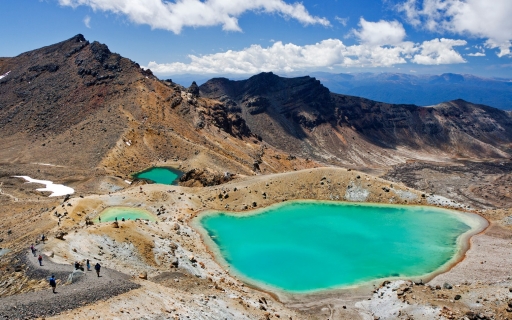Punakaiki Weather and Climate: A Comprehensive Guide
Punakaiki has relatively stable weather with mild temperatures.
It also experiences much rainfall throughout the year.
Let’s explore the climate details in depth to provide you with a complete overview.
Average maximum day and minimum night temperature
With minimal seasonal shifts, Punakaiki experiences a constant climate year-round. Average daytime temperatures reach a pleasant 19°C in February. In July, the coolest month of the year, temperatures drop to a chilly 12°C.
At night, you can expect cooler temperatures, with averages dropping to around 7°C during this month. Check out our detailed temperature page for more information.Temperature ranges by month
Precipitation and rainy days
Punakaiki has a notably wet climate with abundant precipitation, recording 2899 mm of rainfall per year. Despite minor fluctuations, Punakaiki enjoys fairly consistent precipitation throughout the year. In October, you can expect around 291 mm of precipitation, while in February, Punakaiki receives about 177 mm.The mean monthly precipitation over the year, including rain, hail and snow
Sunshine over the year
Punakaiki can be enjoyed more throughout the sunniest month of January under a blue sky, with approximately 7.0 hours of sunshine daily. In contrast, the city experiences much darker days in June, with only 3.6 hours of sunlight per day. Visit our detailed sunshine hours page for more information.Monthly hours of sunshine
Daily hours of sunshine
Average humidity
The city experiences its highest humidity in February, reaching 84%. In August, the humidity drops to its lowest level at 81%. What does this mean? Read our detailed page on humidity levels for further details.
Relative humidity over the year
partly cloudy and small chance of slight rain partly cloudy and no rain partly cloudy and no rainForecast for Punakaiki
Select a Month of Interest
Check the conditions for any month of the year.
The best time of year to visit Punakaiki in New Zealand
The average rainfall figures in Punakaiki are quite high. Throughout the year, you have a chance of prolonged precipitation. So no matter what time of year you go, you will always have to deal with a high number of rainy days. This makes it more challenging to point out the best time of year to visit. If we needed to pick one month we would choose January which is the sunniest month of the year.Other facts from our historical weather data:
February has an average maximum temperature of 19°C and is the warmest month of the year.
The coldest month is July with an average maximum temperature of 12°C.
October tops the wettest month list with 291 mm of rainfall.
February is the driest month with 177 mm of precipitation.
January is the sunniest month with an average of 211 hours of sunshine.
No idea where to travel to this year? We have a tool that recommends destinations based on your ideal conditions. Find out where to go with our weather planner.




